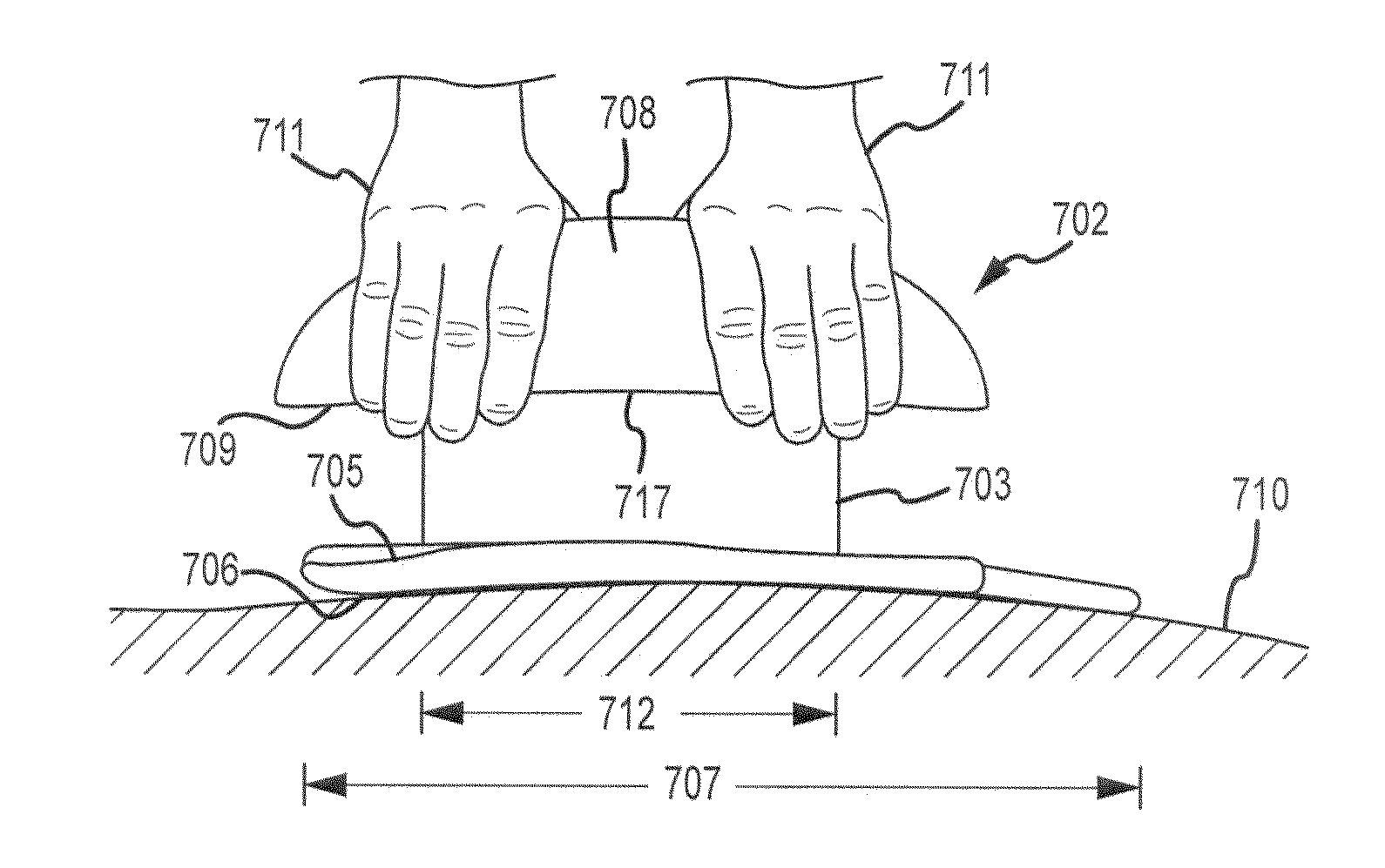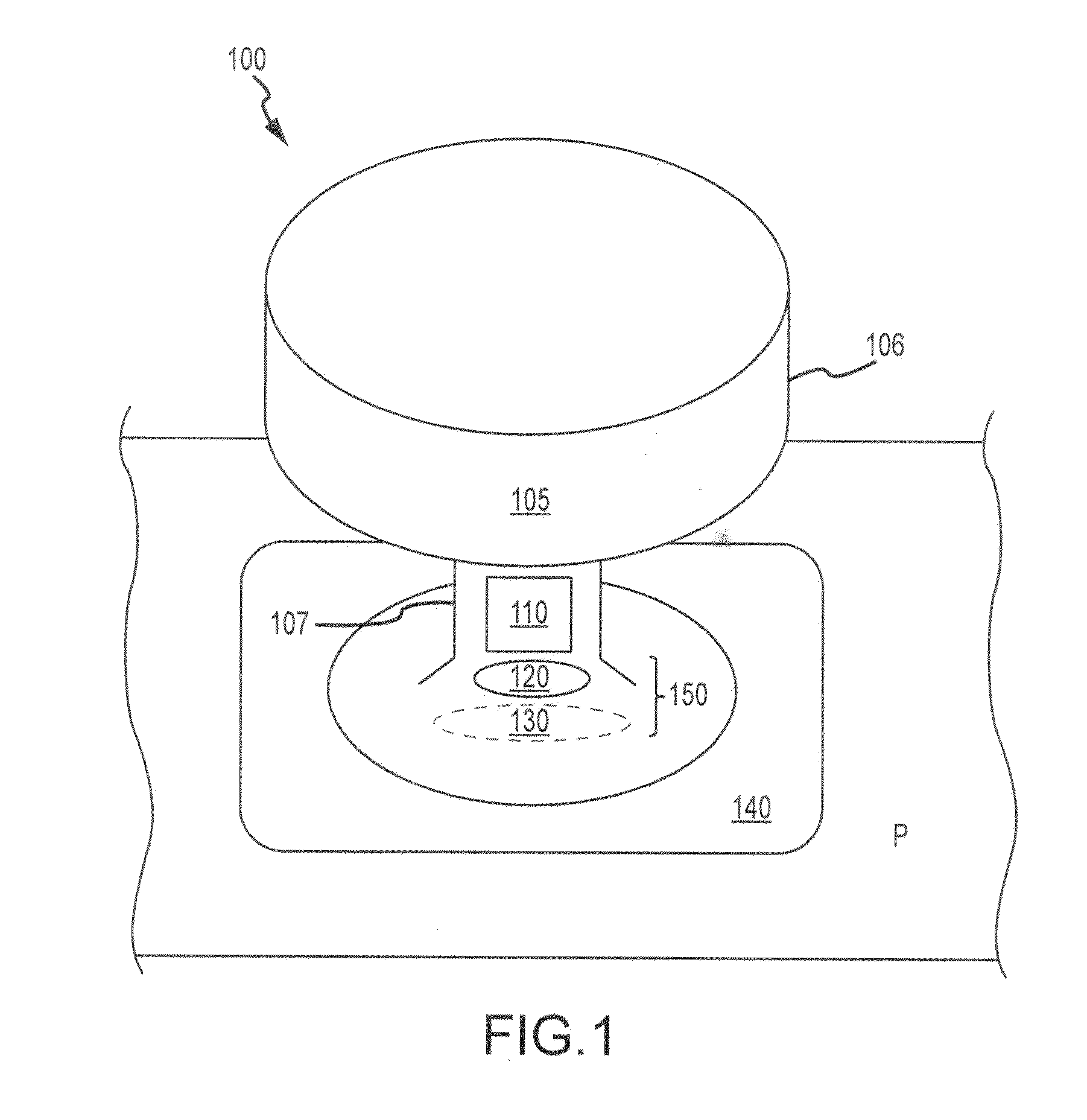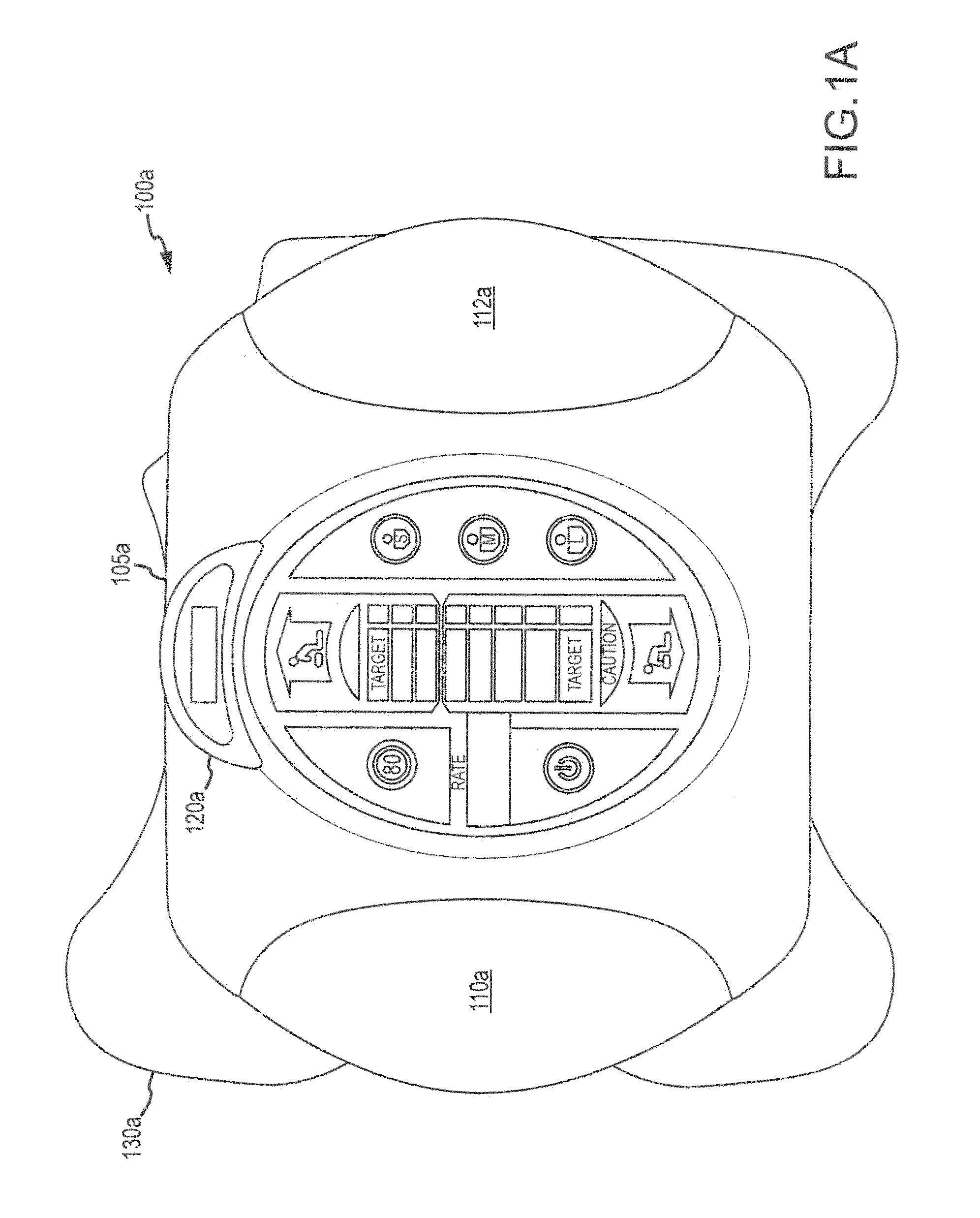[0008]Embodiments of the present invention provide improved systems and methods for performing external chest compression, optionally in conjunction with CPR procedures. Such methods and systems provided enhanced ventilation and
blood circulation in the patient undergoing treatment, preferably reducing or eliminating the need to separately ventilate the patient. Desirably, the methods and systems can be simple and easily stored so that they can be maintained in emergency vehicles, non-medical facilities, and even the home. The systems can be suitable for performing enhanced manual CPR, in particular by converting Phase 2 chest expansion from a passive event to an active process to improve
venous blood return from the heart and enhance
airflow into the lungs (facilitated ventilation). Systems can provide guidance to operators or technicians, such as digital outputs showing the amount of force to be applied to a patient during a chest compression or decompression. Further, systems may include
handle configurations which ensure appropriate forces are applied to the patient.
[0009]Chest compression or decompression systems according to embodiments of the present invention also provide a device contact area or
adhesive pad that is 2 to 4 times larger than the compressive area. Such configurations can allow an operator to physically lift or decompress a large surface area of the patient's chest. Relatedly, such large surface contact areas can make it easier for an operator or user to generate a full or greater decompression, thus resulting in more
blood flow back to the heart. What is more, embodiments of the present invention provide compression surface areas which are sufficiently large to confer enhanced coronary
perfusion pressure or
increased blood flow from the heart to other organs or tissue during compression.
[0012]In another aspect, embodiments of the present invention provide systems and devices for actively compressing and expanding an area of the body. A device can include a compression element that is configured to be pressed and lifted, and a flexible
surface element operably coupled with the compression element and configured to be removably attached to a body part over a contact area. In some cases, the compression element is adapted to apply a compressive force to the body part through the
surface element over a compressive area when the compression element is pressed. The contact area can be sized to be at least twice as large as the compressive area. In some cases, the contact area can be sized to be in the range of two to three times as large as the compressive area. Optionally, the
surface element can be a generally planar flexible
contact pad the lower surface of which defines the contact area. In some instances, the lower surface of the
contact pad includes an adhesive material. In some cases, the compression element includes a dome-shaped handle disposed on the top end of a centrally-located rigid connecting stem. Optionally, the bottom end of the connecting stem can be connected to the top surface of a generally planar flexible
contact pad and define the compressive area. The handle can include a dome-shaped upper surface and an annular planar lower surface surrounding the top end of the connecting stem, and the upper surface and lower surface can be separated by a
peripheral flange. In some cases, a device includes at least one measuring element associated with the contact pad. A measuring element can be configured to measure a physiological parameter of the patient. A device may also include a display element associated with the contact pad. In some cases, the display element is configured to provide
patient feedback information. A device may also include at least one
electrode associated with the surface element for applying
electricity to the body part. In some cases, a device includes means associated with the surface element for applying a
drug. Optionally, a device may include at least one sensor associated with the surface element. In some instances, a device may include at least one reference element associated with the surface element to aid in the proper placement of the surface element on the body part.
[0013]In another aspect, embodiments provide systems and methods for increasing and reducing intrathoracic pressure wherein a flexible contact pad is removably attached to a patient's chest over a contact area, and a handle configured to be pressed and lifted is operably connected to the contact pad so that pressing down of the handle applies a compressive force over a compressive area to compress the chest, and lifting up of the handle applies a lifting force over the contact area to expand the chest. In some cases, the contact area is sized to be at least twice as large as the compressive area. Optionally, the contact area is sized to be from 2 to 3 times as large as the compressive area.
[0015]In still another aspect, embodiments of the present invention encompass systems and methods and devices for the performance of volume exchange CPR, wherein during the compression of the chest the pressure inside the
thorax rises and blood is propelled forward out of the heart and lungs to the brain and other organs outside the
thorax. At the same time respiratory gases are pushed out of the lungs as the lungs are compressed. During the decompression phase the anterior chest wall is lifted upward and at the same time respiratory gases are prevented or inhibited from entering the lungs by transiently blocking or occluding the
airway. By preventing or inhibiting respiratory gases from entering the lungs during the decompression phase of the
thorax, more
blood volume is drawn into the thorax, into the heart and lungs, in exchange for the volume of respiratory gas that was pushed out of the lungs on the prior compression and not allowed back into the lungs by occluding the
airway. The means to occlude the
airway could be a one-way valve or preferably a valve
system that allows for the rescuer to ventilate the patient. One way to ventilate the patients would be to periodically provide a
positive pressure ventilation through or around the one-way valve. Thus, volume exchange CPR allows for
blood flow out of the heart or the brain during the
compression phase, and allows for more blood, rather than respiratory gases, to enter the lungs during the decompression phase. In one aspect of volume exchange CPR, respiratory gases could be actively removed from the lungs with a low-level vacuum that could be continuous or intermittent, during CPR. In another aspect of volume exchange CPR respiratory gases could be actively withdrawn from the lungs and then a
positive pressure breath could be delivered, with or without a period of positive end-expiratory pressure before or after the
positive pressure ventilation.
 Login to View More
Login to View More  Login to View More
Login to View More 


